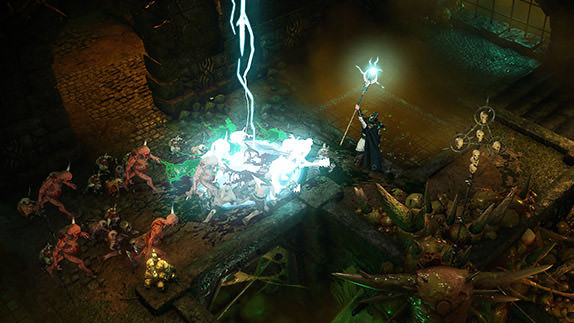Human Resource Machine Review

 By Kevin Mitchell | March 24, 2017
By Kevin Mitchell | March 24, 2017
The latest title from indie developer Tomorrow Corporation released only a couple years ago but finds a new home and audience on the Nintendo Switch. Although Little Inferno's gameplay loop had you setting everyday objects on fire, there was very little brain power involved, outside of figuring out combos. Human Resource Machine is a completely different beast entirely, surprising me with how quickly the tasks ramped up in difficulty. If programming or mathematics isn't your strong suit, you may be in for a rude awakening in Human Resource Machine, yet at the same time, I absolutely love the challenge.
In essence, Tomorrow Corporation has created a game that goes over the very basics of programming in a charming visual style. As a mindless worker, you must complete dozens of logic puzzles that get progressively harder. Every puzzle has various conditions that must be met, but the game begins with the simplest of tasks: moving the numbers from the inbox to the outbox. On the right side of the screen, you are given a place to click and drag different commands. While using inbox and outbox are requirements, what you place between them is where all the fun and frustration comes from in Human Resource Machine.
Early on, the number of steps needed to solve puzzles is quite minimal. Loop your procedure to ensure you circle back to grab everything from the inbox. It doesn't take long before you are using commands to loop to separate commands if a number is negative or zero, and depending upon the requirement, you may only have to place negative or zero numbers in the outbox. The opposite is also true, as you may find you need to avoid them altogether. I hit my first snag in the game when more complex tasks required using mathematics. Using the copy function, you can place the numbers on the blank squares in the center of the room. This allows you to add or subtract and even do more complicated things, such as multiplication, a countdown to zero, and more. Considering you are limited in what you can use, it does take some workarounds for your functions to properly work and loop smoothly regardless of what numbers/letters are placed in the inbox.
Now with that said, there is more than one way to solve every one of the puzzles, but you must strive for more refined solutions. There are two challenges attached to every puzzle, one pushing you to use as few commands as possible, and the other to complete it in the fewest amount of steps. Sometimes you can satisfy both at the same time, but when things become much more complicated, you may not be able to optimize your solutions for both. Instead, pick one and aim to complete it, and then circle back and try to accomplish the next challenge.
If your job fails or can only support the current set of numbers/letters, and not them in any other order, you have multiple options open to you. You can use the two additional tabs to start over, or even copy what you have done, without having to worry about erasing the current process you created. There is even a debug button, letting you go step by step through your list of commands, to figure out what went wrong. I found this to be the best method in actually understanding how your list of commands works, or why something is not working. Of course, since the game has been out for a couple of years on other platforms, you could look up the solution if you find yourself stuck and want to move on. If you do this, I highly recommend watching the task in real time to understand what was done instead of fast-forwarding just to make progress to the next one. If you see the solution and can read it, it may help you on a puzzle later on.
Simply Put
Human Resource Machine may be light on story elements, but the programming gameplay is where the game shines. While I came into the game with no programming skills, I felt the game's difficulty took a wrong turn quite early on. After learning more about the commands and thinking through the puzzles, it greatly helped me complete even more challenging tasks later on in the game.
Note: Human Resource Machine was reviewed on Switch. A digital copy of the game was provided by the publisher/developer.




